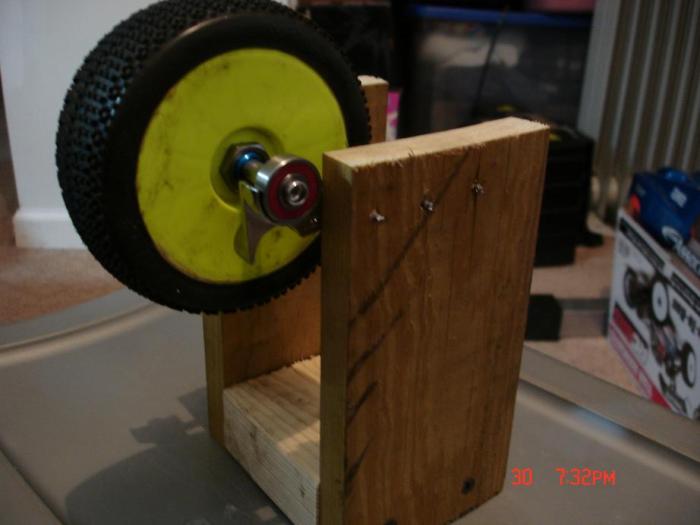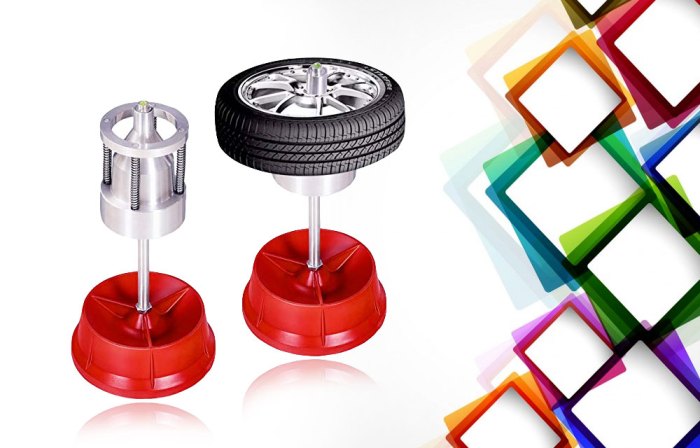DIY tire balancing is a skill that can save you money and give you a better understanding of your vehicle’s maintenance. This process involves ensuring your tires are properly balanced to prevent vibrations, improve fuel efficiency, and enhance your overall driving experience.
From understanding the basics of tire balancing to learning how to use specialized tools, this guide will walk you through the steps involved in DIY tire balancing. We’ll cover everything from identifying tire imbalance symptoms to troubleshooting common mistakes, ensuring you have the knowledge and confidence to tackle this task yourself.
Preparing the Tire for Balancing

Before you can balance your tire, you need to properly prepare it. This includes removing the tire from the wheel and thoroughly cleaning both the tire and wheel. This ensures accurate balancing and helps to identify any potential issues.
Removing the Tire from the Wheel
To remove the tire from the wheel, you will need a tire iron and a jack.
- First, use the jack to lift the vehicle so that the tire is off the ground.
- Then, use the tire iron to loosen the lug nuts.
- Once the lug nuts are loose, you can remove the tire from the wheel.
Cleaning the Wheel and Tire
Cleaning the wheel and tire is crucial before balancing.
- Dirt, grime, and debris can interfere with the balancing process and lead to inaccurate results.
- Use a brush and soapy water to clean the wheel and tire thoroughly.
- Pay close attention to the bead area where the tire meets the wheel.
- Ensure the tire is completely dry before proceeding with balancing.
Safety Precautions for DIY Tire Balancing

DIY tire balancing can be a cost-effective way to maintain your vehicle, but it’s crucial to prioritize safety throughout the process. Improper handling of tools and equipment can lead to serious injuries. Here’s a breakdown of essential safety precautions to ensure a smooth and risk-free experience.
Personal Protective Equipment (PPE), Diy tire balancing
Wearing appropriate PPE is essential when working with tools and heavy equipment.
- Always wear safety glasses to protect your eyes from flying debris.
- Use heavy-duty gloves to prevent cuts and abrasions from sharp edges.
- Consider wearing a dust mask or respirator to prevent inhaling harmful particles.
- Closed-toe shoes are recommended to protect your feet from potential drops or rolling objects.
Tool Safety
Using tools correctly and safely is paramount.
- Ensure all tools are in good working condition and free from damage.
- Always use the appropriate tool for the job and follow the manufacturer’s instructions.
- Store tools in a safe and organized manner when not in use.
- Never use a tool if you are unsure of its proper operation or safety.
Jacking Up the Vehicle
Jacking up your vehicle involves inherent risks.
- Use a jack that is rated for the weight of your vehicle and ensure it is in good condition.
- Always use jack stands to support the vehicle after lifting it with the jack. Never rely solely on the jack to support the vehicle.
- Position the jack stands on a firm and level surface.
- Ensure the vehicle is parked on a level surface and the parking brake is engaged before lifting.
- Never work under a vehicle supported only by a jack.
Tire Removal and Installation
Removing and installing tires requires careful handling.
- Use a lug wrench that is the correct size for your vehicle’s lug nuts.
- Apply even pressure to the lug wrench to avoid damaging the lug nuts or the wheel.
- Never use a hammer or other tools to loosen or tighten lug nuts.
- Always ensure the lug nuts are tightened to the manufacturer’s specifications.
Balancing Machine Safety
Balancing machines can be powerful and require cautious operation.
- Read and understand the manufacturer’s instructions before operating the machine.
- Ensure the machine is properly grounded and connected to a power source.
- Never operate the machine with loose clothing or jewelry.
- Keep hands and fingers away from moving parts while the machine is running.
By mastering the art of DIY tire balancing, you gain a valuable skill that empowers you to maintain your vehicle effectively. Whether you’re a seasoned mechanic or a curious DIY enthusiast, understanding the principles of tire balancing can lead to a smoother ride, improved safety, and potentially even extended tire life.
DIY tire balancing can be a rewarding experience, allowing you to save money and learn a new skill. While it’s a bit different from installing your own MrCool DIY mini splits , the principle of doing it yourself is the same. Both require careful attention to detail and the right tools, but with a little patience, you can achieve excellent results.
Just remember to take your time and follow the instructions carefully when balancing your tires.
